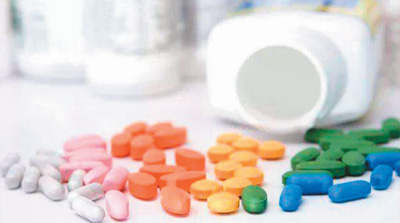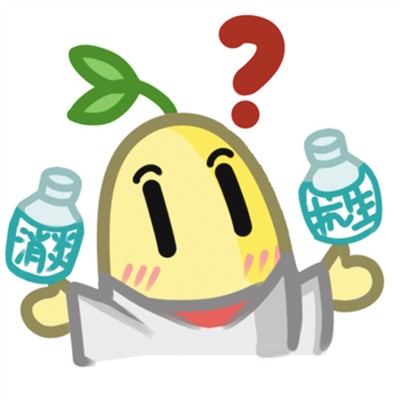Take anti-inflammatory drug infusion as soon as you have a cold and fever? Bacterial drug resistance is more harmful


In daily life, many people ask doctors for anti-inflammatory drugs and infusion when they have a cold and fever, thinking that this is "getting better quickly". As everyone knows, this is a typical abuse of antibiotics, and its biggest harm is to cause bacterial resistance. Zhong Nanshan, a famous respiratory expert and academician of China Academy of Engineering, said recently that there are various causes of inflammation. Antibiotics are aimed at infections caused by bacteria or fungi, and should not be used at will. In particular, the use of high-level antibiotics should be strictly controlled to curb bacterial drug resistance.
Antibiotic abuse is a public health problem facing the whole world.
Antibiotics are the most powerful weapon in the long and arduous struggle between human beings and bacteria, but the abuse of antibiotics has always been a public health problem facing the whole world. Zhong Nanshan said that the most serious harm caused by the abuse of antibiotics is that bacteria develop drug resistance. If some bacteria producing drug-resistant genes are not killed by antibiotics, they will continue to spread drug-resistant genes. Over time, more and more bacteria will carry drug-resistant genes, resulting in the failure of antibiotics, which brings great difficulties to treatment and increases the cost of treatment.
It is understood that the abuse of antibiotics includes improper use, inaccurate dosage, improper frequency of use and course of treatment, all of which will lead to bacterial resistance, and eventually lead to "no medicine available". The emergence of "super bacteria" is the serious consequence of bacterial resistance.
Zhong Nanshan, for example, said that fluoroquinolones are widely used in China, and the resistance to these antibiotics has reached 60%, which is rare in the world. In the past, penicillin was very effective for skin infection and visceral infection caused by Staphylococcus aureus, but MRSA appeared later, which has become one of the important pathogens of nosocomial infection. After carbapenem was introduced into China, it gradually became one of the main antibacterial drugs for treating serious bacterial infections.
According to a survey data, in some places, the proportion of antibiotics used for colds has reached 60%— 70%, and viral colds don’t need antibiotics at all. "Antibiotics are not equal to anti-inflammatory drugs." Zhong Nanshan has repeatedly stressed.
In the past, people solved the problem of bacterial resistance by developing new antibiotics and constantly introduced advanced antibiotics, but the speed of developing new antibiotics was far behind the pace of bacterial resistance. Therefore, strengthening antibiotic management, strictly controlling abuse and rational use are the key and effective means.
In addition, the problem of antibiotic abuse not only occurs in medical treatment, but also in animal husbandry and aquaculture, which requires the efforts of all sectors of society to jointly curb the problem of antibiotic abuse.
Find out the difference between antibiotics and anti-inflammatory drugs
Many people think that antibiotics are anti-inflammatory drugs, but strictly speaking, antibiotics are not anti-inflammatory drugs, they are two different concepts. Wei Bi, School of Pharmacy, Shandong University, said that "inflammation" is the body’s defensive response to external stimuli. Viruses, fungi, bacteria, dust from the air, burns, etc. may all cause inflammation, and its clinical manifestations are redness, fever and pain at the infected site.
Anti-inflammatory drugs are drugs that can eliminate inflammation. They are divided into two categories, one is non-steroidal anti-inflammatory drugs, and the other is glucocorticoid. Antibiotics are drugs that kill microorganisms and belong to "bactericidal drugs". Inflammation caused by bacterial infection can be treated with antibiotics; Not inflammation caused by bacterial infection, antibiotics can’t play any role.
At present, antibiotics are often used by people, but if they are used in large quantities or abused, people will develop drug resistance, resulting in many diseases that are difficult to treat. Therefore, under normal circumstances, antibiotics should be used under the guidance of a doctor. Don’t blindly choose by yourself. At the same time, pay attention to its dosage and frequency of use, and don’t stop taking drugs without authorization. The best way to treat inflammation is to choose appropriate drugs, find the cause and prescribe the right medicine, and follow the doctor’s advice.
People often use antibiotics and anti-inflammatory drugs to treat various inflammations. In real life, there are many inflammations with the word "inflammation", but can these diseases with the word "inflammation" really be treated with antibiotics and anti-inflammatory drugs? That was not the case. Such as "osteoarthritis". Many people think that its symptoms are joint inflammation and need to be treated with antibiotics or anti-inflammatory drugs. However, osteoarthritis is a chronic bone and joint disease that leads to joint degeneration or bone hyperplasia due to articular cartilage degeneration and damage. Its pathogenesis is not caused by viruses, fungi and bacteria, but by obesity, old age, heredity and other factors. Generally, physical methods are needed to improve the treatment.
Therefore, if there are some symptoms that you can’t judge yourself, don’t rush to treat with antibiotics or anti-inflammatory drugs. You should seek medical advice in time to find out whether it is caused by bacterial, fungal or viral infection, and then do the treatment. You should start from the pathogen and prescribe the right medicine.
Rational use is the key to the management of antibiotics.
The report issued by the World Health Organization pointed out that the drug resistance of antibacterial drugs has posed a serious threat to human health. At present, it is necessary to prevent the abuse of antibacterial drugs, reduce the occurrence of bacterial resistance and help the public to establish the concept of scientific and rational drug use. At the G20 Summit held in Hangzhou in 2016, the issue of dealing with antibiotic resistance was written into the summit communiqué and became a strategic issue at the national level. Zhong Nanshan said that in China, the problem of antibiotic abuse and bacterial resistance is prominent. National Health Commission has successively issued a series of related policies to define and regulate the diseases and high-level antibiotics that should not be used. For example, advanced antibiotics can only be used with the consent of high-level doctors; Consciously control the rate of using antibiotics in outpatient and ward.
In recent years, the intensity and level of antibiotic management in China have been continuously strengthened. In 2016, National Health Commission and 14 ministries and commissions jointly issued the National Action Plan to Contain Bacterial Resistance (2016-2020). In 2017, the former National Health and Family Planning Commission set up an expert committee on the clinical application of antibacterial drugs and the evaluation of bacterial resistance at the national level, with Zhong Nanshan, an academician of China Academy of Engineering, and Zhao Yupei, an academician of China Academy of Sciences as the chairmen, and organized experts from all over the country to provide technical guidance on the rational use of antibiotics and bacterial resistance. First of all, the Committee has promoted a series of educational activities, such as how to correctly treat the drug resistance of carbapenem; Secondly, the relevant technical provisions were formulated, and based on the research on the clinical application of antibacterial drugs, the situation of bacterial resistance, the spectrum of infectious diseases and the economic burden of bacterial resistance in China, specific technical specifications and technical evaluation were provided.
Experts believe that in the long run, it is necessary to promote the rational use of antibiotics through professional behavior, including improving the ability of doctors to use antibiotics rationally, making people understand the dangers of using antibiotics at will, and at the same time preventing bacterial infections and controlling nosocomial infections. Only when these aspects are improved, it is possible to use antibiotics rationally and curb bacterial resistance.
"In the previous stage, the management of antibiotics in China was mainly based on administrative means, which controlled the overuse of antibiotics and gradually moved closer to professional management in the future. The combination of administrative management and professional management can make the rational use of antibiotics go faster. " Zhong Nanshan said. He stressed that the key to the management of antibiotics lies in rational use, rather than simply reducing the dosage. If an antibiotic is not used in time, it will also delay treatment.
How to distinguish antibiotics from anti-inflammatory drugs?
The best way is to read the instructions. If you don’t understand them, there is a simpler way: most of the drugs that contain the words "mycin", "bacteriocin" and "ofloxacin" in their names are antibiotics (a few are chemotherapy drugs), such as amoxicillin, ampicillin, benzylpenicillin, carbenicillin, etc., which belong to the classic "penicillin" antibiotics.
There are generally two types of anti-inflammatory drugs: one is often said to have "loose" hormones, such as cortisone, hydrocortisone, dexamethasone and so on; The other is anti-inflammatory painkillers, such as ibuprofen and aspirin.
Experts remind that what medicine is used for bacterial infection is not expensive, new or imported, and patients must strictly follow the doctor’s advice.